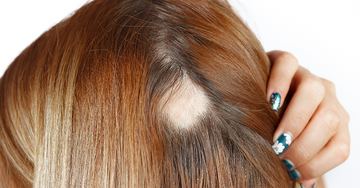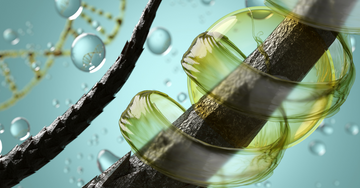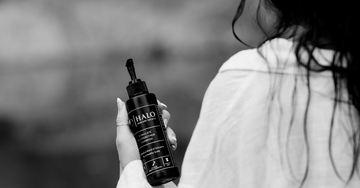Understanding Alopecia
Alopecia is a condition that effect's the lives of millions worldwide, causing hair loss that transcends mere physical appearance, reaching into emotional well-being too. Despite its widespread prevalence, a shroud of misconceptions surrounds this condition. Here, we explore the multifaceted world of alopecia, unravelling its causes, diverse types, and the coping strategies individuals have to navigate this often-misunderstood challenge.
What is Alopecia?
Alopecia is a medical term that encapsulates the loss of hair from areas where it typically thrives. This condition is indiscriminate, affecting individuals of all ages, genders, and ethnic backgrounds. The spectrum of hair loss can vary from small, localized patches to the profound loss of all body hair. Alopecia causes are as diverse as its presentation, with different types revealing distinct underlying mechanisms.
Types of Alopecia
- Androgenetic Alopecia: Known as male or female pattern baldness, this is the most common form of hair loss. It emerges as a result of genetic factors and hormonal shifts, leading to a gradual thinning of hair over time. If you want to know more about Male Pattern Baldness click here for link to blog
- Alopecia Areata: Presents as sudden hair loss in round patches on the scalp or other areas of the body. It's an autoimmune condition where the immune system turns against the hair follicles. Hair can grow back, although it may take several months or even years, and some may face recurring episodes throughout their lives.
- Alopecia Totalis and Alopecia Universalis: These forms represent more severe variations of alopecia areata. In alopecia totalis, every strand of hair on the scalp is effected, while alopecia universalis involves the loss of all body hair.
- Telogen Effluvium: Triggered by physical or emotional stress, this type disrupts the hair's natural growth cycle, leading to premature shedding. Events like childbirth, surgery, trauma, fever, and even emotional stressors can set the stage for this condition.
- Scarring Alopecia: Also known as cicatricial alopecia, this variant is driven by inflammation, which ultimately destroys hair follicles, leaving behind scars. Trauma to the head, chemicals and burns can lead to cicatricial alopecia.
- Traction Alopecia: Tight hairstyles are the culprits here, as they subject the hair to constant stress, eventually causing it to fall out and potentially leading to scarring alopecia if the offender is not addressed.
Causes and Triggers
The intricate tapestry of alopecia's causes weaves together genetic, hormonal, immune system, and environmental factors. The risk factors encompass:
- Genetics: Family history often takes center stage, particularly in cases of androgenetic alopecia.
- Hormonal Changes: Imbalances, such as those during pregnancy, menopause, or thyroid disorders, can contribute to hair loss.
- Autoimmune Reactions: Alopecia areata emerges when the immune system mistakenly targets hair follicles.
- Stress: Physical or emotional stress can trigger telogen effluvium, causing temporary hair shedding.
Diagnosis and Treatment
If you're grappling with hair loss, your first step should be to reach out to a Trichologist. They can diagnose alopecia through a careful review of your recent health history, potentially supplemented by blood tests. Studies have revealed that alopecia is closely connected to the immune system, with low zinc levels often found in individuals with the condition. Vitamin D deficiency is also linked to hair loss and can be addressed through supplements and adequate sun exposure. While other vitamins and minerals like iron, folate, B12, selenium, and biotin show promise in aiding hair growth, further research is needed to establish their direct impact.
Treatment for alopecia hinges on the underlying cause and may include:
- Medications to slow hair loss.
- Immune system support, especially if hair loss is triggered by infections or fevers.
- Topical treatments containing plant-based vasodilators that stimulate hair growth.
- Stress management strategies, including dietary adjustments, reduced alcohol consumption, gentle exercise like yoga, meditation, and self-care.
Coping Strategies
Living with alopecia can be emotionally demanding, but there are a host of strategies that empower individuals to navigate this journey with resilience and grace:
- Seek Support: Connecting with support groups or counselling provides a safe haven to share experiences and feelings with others who understand your unique challenges. Social media also boasts inspiring advocates who share their real-life experiences with alopecia.
- Hairstyling Options: Wigs, hairpieces, scarves, silk turbans, and microblading for eyebrows and eyeliner or PMP for your scalp offer opportunities to boost self-confidence, especially for those with Alopecia universalis.
- Educate Others: By raising awareness about alopecia, we can dispel myths and misconceptions, fostering understanding and empathy, and becoming advocates for ourselves and others.
- Healthy Lifestyle: Embracing a balanced diet, regular exercise, and stress management techniques contributes not only to overall well-being but also to potentially minimizing hair loss.
- Medical Interventions: Depending on the type and severity of alopecia, Trichologists may recommend treatments such as topical medications, red light therapy, or oral therapies.
- Embrace Individuality: focusing on your inner qualities can significantly boost self-esteem and confidence.
Welcoming back your hair
Hair growth looks different for everyone and can be significantly enhanced by the topical treatments used within the hair loss phase. Caring for your follicles and skin barrier can act as a safeguard for your new hair as it emerges. If your follicle health is compromised hair can emerge, coarse and rough to touch or fine like baby hair so soft it doesn't have the strength to emerge and grow which can lead to shortening of the anagen (growing) phase.
Hair colour can also vary as the new hair emerges. Light and dark patches of hair can be present. While new hair is in a delicate state refrain from colouring to allow for your new hair and your scalp to become as healthy as possible.
Haircare tips
Topical treatments recommended by professionals can help you to establish a healthy routine to caring for your hair, not only does this give you some form of control over your hair loss but also helps with selfcare which improves stress and mental well-being. Every individual is different and will need a different approach to their hair loss.
Here are some of our top performers for those suffering with Alopecia.
- Hair and Scalp Oil massaged in before your cleanse and care routine. This aids in follicle and skin barrier health.
- Stimulate and Strengthen Shampoo contains plant-based DHT blockers, these block the formation of DHT which is linked to hormonal hair loss. Plant based vasodilators are also present which encourages your nutrient rich blood up to the surface to feed your hair.
- Strengthen and Shine Conditioner helps to strengthen the new grow as it emerges.
- Reinforcement Treatment mimics the natural composition of the hair and scalp working as a twofer with plant-based vasodilatation for the scalp and reinforcing your hairs structure.
- Revitalise Serum is a light-weight treatment that can be applied daily to the hair and scalp. Strengthening the anagen phase and strengthening new hair.
- Styled By Gel and Rejuvenate Dust can provide a 'fake it to you make it' approach, amplifying volume into your strands and helping hold your style in place to cover up and patches of hair loss.
Recommendations that can keep the strands you do have in the best condition are;
- Opting for silk when you sleep in the form of pillowcases and turbans.
- Silk hair accessories to tie up your hair ( extremely important if you suffer from traction alopecia).
- Incorporating tools that promote hair health like boar bristle brushes instead of hard plastic brushes that take away from it.
- Massage and red light therapy can also help to increase circulation.
If you need more help please contact us via form below for a curated routine designed for you.
Everything considered
Alopecia, with its web of causes, diverse types, and the coping strategies, it is a complex condition that extends its reach into the physical, emotional, and psychological well-being of those effected. Understanding the multifaceted nature of alopecia is essential to support those who are effected. By raising awareness, we can create a more inclusive and compassionate society that celebrates diversity in all its forms. Alopecia, after all, is just one thread in all human experiences.





